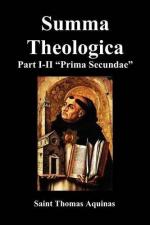According to some, the literal reason for these vestments was that they denoted the disposition of the terrestrial globe; as though the high-priest confessed himself to be the minister of the Creator of the world, wherefore it is written (Wis. 18:24): “In the robe” of Aaron “was the whole world” described. For the linen breeches signified the earth out of which the flax grows. The surrounding belt signified the ocean which surrounds the earth. The violet tunic denoted the air by its color: its little bells betoken the thunder; the pomegranates, the lightning. The ephod, by its many colors, signified the starry heaven; the two onyx stones denoted the two hemispheres, or the sun and moon. The twelve precious stones on the breast are the twelve signs of the zodiac: and they are said to have been placed on the rational because in heaven are the types (rationes) of earthly things, according to Job 38:33: “Dost thou know the order of heaven, and canst thou set down the reason (rationem) thereof on the earth?” The turban or tiara signified the empyrean: the golden plate was a token of God, the governor of the universe.
The figurative reason is evident. Because bodily stains or defects wherefrom the priests had to be immune, signify the various vices and sins from which they should be free. Thus it is forbidden that he should be blind, i.e. he ought not to be ignorant: he must not be lame, i.e. vacillating and uncertain of purpose: that he must have “a little, or a great, or a crooked nose,” i.e. that he should not, from lack of discretion, exceed in one direction or in another, or even exercise some base occupation: for the nose signifies discretion, because it discerns odors. It is forbidden that he should have “a broken foot” or “hand,” i.e. he should not lose the power of doing good works or of advancing in virtue. He is rejected, too, if he have a swelling either in front or behind [Vulg.: ’if he be crook-backed’]: by which is signified too much love of earthly things: if he be blear-eyed, i.e. if his mind is darkened by carnal affections: for running of the eyes is caused by a flow of matter. He is also rejected if he had “a pearl in his eye,” i.e. if he presumes in his own estimation that he is clothed in the white robe of righteousness. Again, he is rejected “if he have a continued scab,” i.e. lustfulness of the flesh: also, if he have “a dry scurf,” which covers the body without giving pain, and is a blemish on the comeliness of the members; which denotes avarice. Lastly, he is rejected “if he have a rupture” or hernia; through baseness rending his heart, though it appear not in his deeds.




